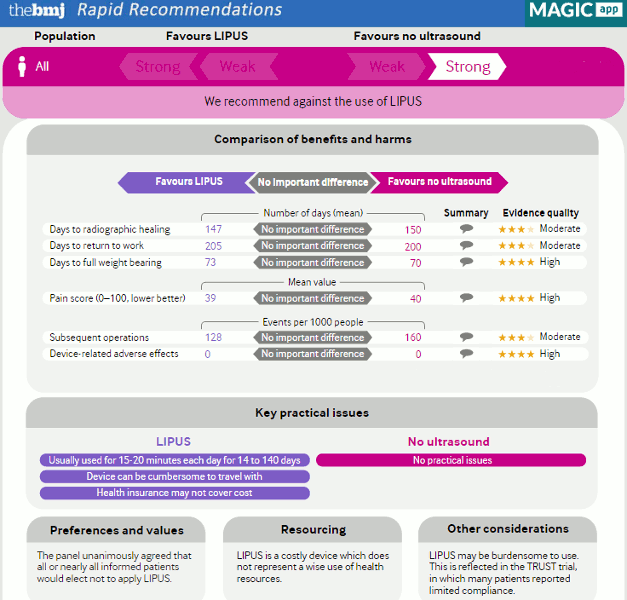Emerging treatments
Electrical, magnetic, and ultrasonic bone stimulators
Many clinicians have recommended bone stimulators to enhance healing in fractures with/at risk for delayed/non-union. However, two systematic reviews did not find sufficient evidence to recommend routine use of ultrasound or electromagnetic field bone stimulators.[96][97] Subsequent guidance similarly recommends against the use of low-intensity pulsed ultrasound for bone healing.
BMJ Rapid Recommendations: low-intensity pulsed ultrasound (LIPUS) for bone healing
Opens in new window[Figure caption and citation for the preceding image starts]: BMJ Rapid Recommendations: low-intensity pulsed ultrasound (LIPUS) for bone healing [Citation ends]. MAGICapp: recommendations, evidence summaries and consultation decision aids
Opens in new window
MAGICapp: recommendations, evidence summaries and consultation decision aids
Opens in new window
Bone grafting
This method can be used for managing complicated fractures and non-unions.[98]
Bone morphogenetic proteins
These have been used to improve healing and decrease complication rates in open tibial fractures and other complicated long bone fractures.[99] Such treatment is generally not needed for more straightforward injuries. However, the injection of various growth factors (e.g., vascular endothelial growth factor), platelet rich plasma, and even stem cells into fracture sites will likely become more common as these technologies advance.
Use of this content is subject to our disclaimer